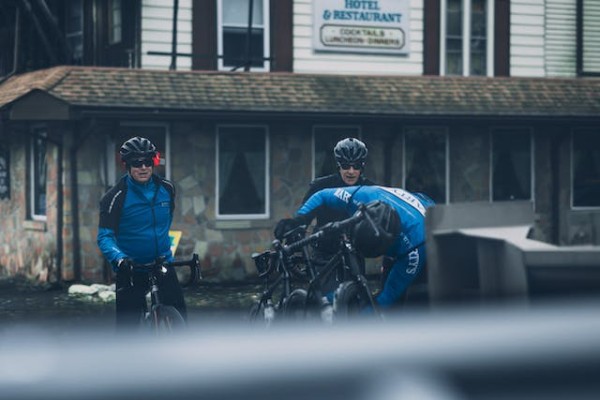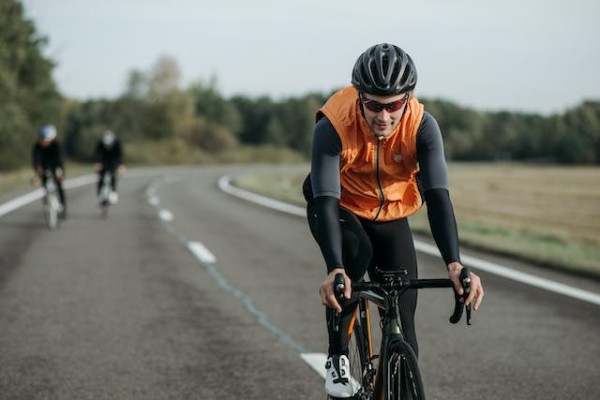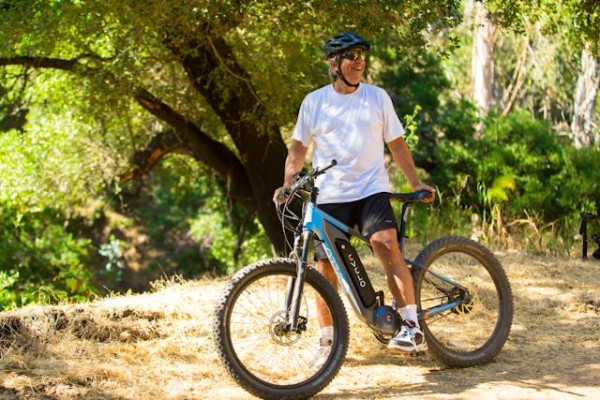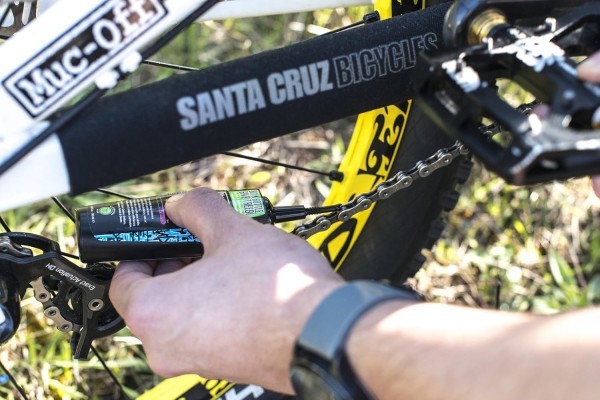Are you ready to take the road by storm? The wind in your hair, the freedom at your fingertips, there’s nothing quite like the thrill of riding your bike. But before you embark on your two-wheeled adventure, it’s crucial to ensure your safety. Riding on the road can be exhilarating, but it can also be dangerous if you don’t take the necessary precautions. That’s why we’ve compiled a list of 9 essential tips to help you ride safely and confidently. From wearing proper protective gear to understanding and following traffic rules, these guidelines will not only protect you from harm but also make you feel like you belong on the road. So, buckle up your helmet, put on your reflective vest, and get ready to discover the secrets of safe riding. Your journey awaits, and with these tips, you’ll be able to navigate the road with ease and confidence. Get ready to ride like never before!
Importance of Proper Protective Gear
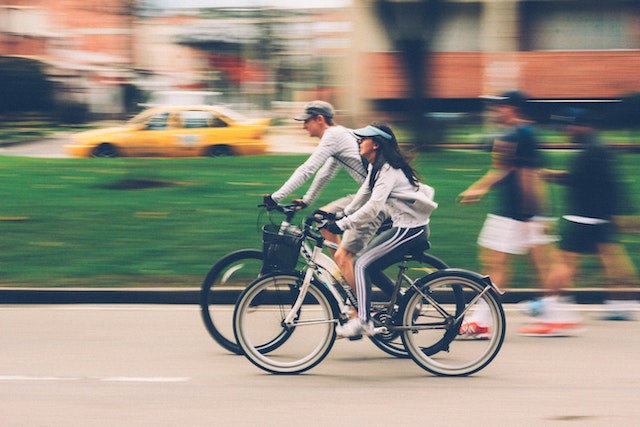
Proper protective gear, such as a helmet and knee pads, is crucial for ensuring the safety and well-being of cyclists on the road. When you hop on your bike, it’s important to prioritize your safety by wearing the right gear. Think of it as your armor, protecting you from any unexpected mishaps.
By putting on a helmet, you’re shielding your head from potential injuries that could have serious consequences. It’s like having a reliable friend who always has your back.
Knee pads, on the other hand, provide an extra layer of protection for your knees, which can be easily injured in case of a fall. They’re like a shield that absorbs the impact, preventing any unnecessary pain or discomfort. Plus, they give you the confidence to take on any road, knowing that you’re prepared for the unexpected.
Wearing proper protective gear not only keeps you safe but also helps you fit in with the cycling community. It shows that you take your safety seriously and are committed to being a responsible cyclist. When others see you wearing your helmet and knee pads, they’ll know that you belong to a group of like-minded individuals who prioritize safety above all else.
So, remember, when you hit the road, make sure you’re not just wearing any gear, but the right gear. Take pride in being part of the cycling community that values safety and well-being. By doing so, you’ll not only protect yourself but also inspire others to do the same. Stay safe, and enjoy the thrill of riding!
Understanding and Following Traffic Rules
Interestingly, obeying traffic rules isn’t just about avoiding getting a ticket, but about ensuring a smooth and stress-free journey. When you follow traffic rules, you contribute to a safer and more organized road environment.
Here are four reasons why understanding and following traffic rules is crucial for your safety and the safety of others:
- Avoid accidents: Traffic rules are designed to prevent accidents and keep everyone on the road safe. By following these rules, such as stopping at red lights and yielding to pedestrians, you reduce the chances of collisions and potential injuries.
- Efficient traffic flow: When everyone follows the same set of rules, traffic flows smoothly. By adhering to speed limits, using turn signals, and maintaining a safe distance from other vehicles, you contribute to a more efficient and predictable traffic flow.
- Respect for others: Following traffic rules shows respect for other road users. By giving way to emergency vehicles, allowing pedestrians to cross safely, and not blocking intersections, you demonstrate consideration and create a sense of belonging within the community.
- Legal consequences: Not following traffic rules can result in legal consequences, such as fines or even the suspension of your driving privileges. By obeying these rules, you ensure that you’re not only protecting yourself and others but also avoiding unnecessary legal troubles.
Remember, by understanding and following traffic rules, you become an active participant in creating a safe and inclusive road environment for everyone.
Signaling and Communication on the Road
Signaling and communication on the road are essential for creating a harmonious and synchronized dance of vehicles. It’s like speaking a universal language that everyone can understand. By using your turn signals, you let other drivers know which direction you intend to go. This simple action not only helps prevent accidents but also shows respect and consideration for others on the road.
Imagine a world where everyone signaled their intentions – it would be a much safer and more efficient place to drive! But signaling is not the only form of communication on the road. Eye contact is another powerful tool that can help you navigate through traffic smoothly. Making eye contact with other drivers can convey your intentions and help establish a connection. It’s a way of saying, ‘I see you, and I acknowledge your presence.’ This simple act can help build trust and create a sense of belonging among fellow road users.
In addition to signaling and eye contact, it’s important to be aware of other forms of communication, such as hand gestures and horn usage. However, it’s crucial to use these forms of communication in a respectful and non-aggressive manner. Remember, the goal is to foster a sense of unity and cooperation on the road, not to incite anger or frustration.
Signaling and communication on the road play a vital role in ensuring safety and creating a sense of belonging among drivers. By using your turn signals, making eye contact, and using other forms of communication respectfully, you contribute to a more harmonious and synchronized driving experience. So, let’s all do our part and communicate effectively on the road, making it a better place for everyone!
Being Aware of Surroundings and Potential Hazards
Being aware of your surroundings and potential hazards is essential for a smooth and enjoyable driving experience. When you’re on the road, it’s important to stay vigilant and observant, constantly scanning your environment for any potential dangers. By doing so, you can anticipate and react to hazards before they become a problem.
To help you stay aware, here’s a handy table that outlines some common surroundings and potential hazards you might encounter while riding on the road:
| Surroundings | Potential Hazards |
|---|---|
| Busy intersections | Distracted drivers not following traffic signals |
| Parked cars | Doors opening suddenly without warning |
| Construction zones | Uneven road surfaces or debris |
| Pedestrian crossings | Pedestrians unexpectedly stepping onto the road |
| Blind spots | Other vehicles do not see you when changing lanes or turning |
By being aware of these surroundings and potential hazards, you can take proactive measures to avoid accidents or dangerous situations. Remember to always stay focused, keep a safe distance from other vehicles, and use your mirrors and signals effectively. By practicing these habits, you’ll be able to confidently navigate the road and ensure a safe and enjoyable riding experience.
Proper Bike Maintenance and Inspection
To ensure a smooth and enjoyable biking experience, make sure you regularly inspect and maintain your bike in top condition. By taking the time to properly care for your bike, you can prevent potential accidents and keep yourself safe on the road.
Start by checking your tires before every ride. Ensure they’re properly inflated and free from any cuts or bulges. This will not only improve your bike’s performance but also reduce the risk of a blowout while riding.
Additionally, inspect your brakes to make sure they’re responsive and in good working order. You want to be able to stop quickly and safely when needed.
Regularly clean and lubricate your bike’s chain to keep it running smoothly. A dirty or dry chain can cause your gears to slip, which can be dangerous when riding at high speeds. Also, check your bike’s gears and shifters to ensure they’re shifting smoothly and accurately.
Don’t forget to check your bike’s lights and reflectors. These are essential for visibility, especially when riding in low-light conditions or at night. Make sure they’re clean and in working order to increase your visibility to other road users.
By following these maintenance tips, you can ensure that your bike is in top condition and ready for safe riding. So, take the time to inspect and maintain your bike regularly, and enjoy a smooth and safe biking experience on the road.
Frequently Asked Questions
What is the best type of protective gear to wear while riding on the road?
The best type of protective gear to wear while riding on the road is a helmet, gloves, and reflective clothing. These will help protect you from head injuries, provide a better grip, and make you more visible to other drivers.
Are there any specific traffic rules that apply only to cyclists?
Yes, there are specific traffic rules that apply only to cyclists. For example, you should always ride in the same direction as traffic and signal your turns. It’s important to know and follow these rules to stay safe on the road.
How can I effectively communicate with other road users while riding my bike?
To effectively communicate with other road users while riding your bike, be as clear as a bell. Use hand signals, eye contact, and friendly gestures to show your intentions and create a sense of camaraderie on the road.
What are some common hazards that cyclists should be aware of on the road?
Be aware of common hazards on the road while cycling. Look out for potholes, opening car doors, pedestrians, and other vehicles. Stay visible, signal your intentions, and always wear a helmet for your safety.
How often should I inspect and maintain my bike to ensure safe riding?
To ensure safe riding, inspect and maintain your bike regularly. Did you know that 45% of bike accidents are caused by mechanical failures? By taking care of your bike, you’ll feel confident and part of the cycling community.
